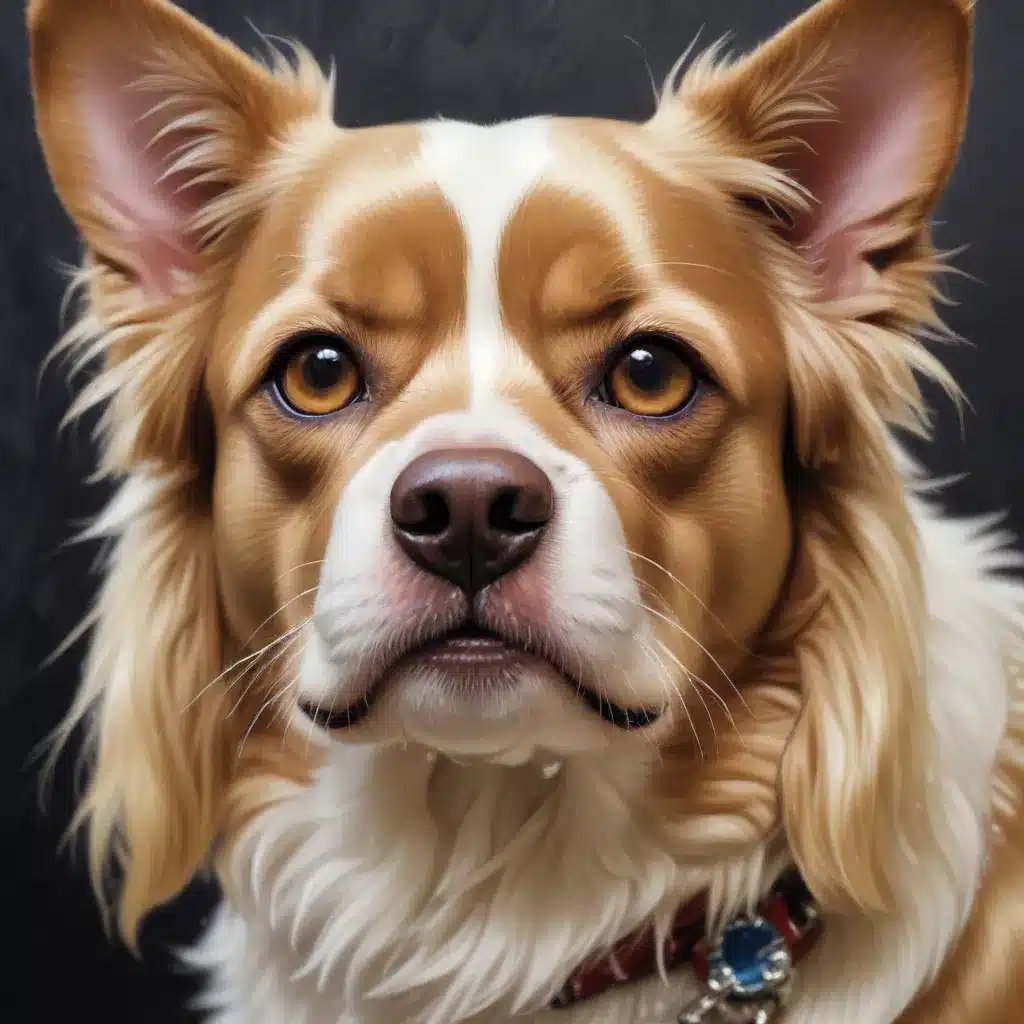
Imbuing your pet portraits with a touch of metallic magic can elevate the overall visual interest and impact. Whether you’re seeking to capture the gleam of a wet dog’s coat, the glimmer of a cat’s inquisitive eyes, or the radiance of a shiny reptile’s scales, metallic accents can breathe new life into your artwork. In this sixth installment of our “Metallic Mastery” series, we’ll explore techniques for incorporating shimmering elements into your pet paintings.
Metallic Mediums
When it comes to adding metallic effects, your choice of medium can make all the difference. Metallic acrylics and metallic watercolors are an obvious starting point, providing a direct way to lay down shimmering pigments. However, don’t overlook the potential of metallic gouache, metallic inks, or even metallic pastels – each medium offers unique characteristics that can serve different artistic goals.
Metallic acrylics, for instance, allow for bold, opaque applications that can be blended seamlessly with regular acrylic paints. Metallic watercolors, on the other hand, tend to have a more translucent quality, lending themselves well to layering and glazing techniques. Metallic gouache can strike a balance, providing the intensity of acrylics with the workability of watercolors. Ultimately, experiment with the various metallic media to discover which best suits your painting style and desired aesthetic.
Metallic Pigments
Beyond just selecting the right metallic medium, the specific pigments you choose can greatly impact the final result. Metallic gold, metallic silver, and metallic copper are classic choices, but don’t limit yourself. Explore the wide range of metallic hues available, from warm bronzes and lustrous bronzes to cool, steely grays and even iridescent shimmers.
When working with metallic pigments, pay close attention to their undertones and how they interact with the other colors in your painting. A warm golden metallic, for instance, may pair beautifully with earthy tones, while a cool silvery metallic could complement more vibrant, chromatic hues. Experiment with mixing metallic pigments to create custom shades that seamlessly integrate with your overall color palette.
Metallic Brushwork
The way you apply metallic paints can also greatly influence the final appearance. Dry-brushing techniques, where you lightly drag a mostly dry brush across the surface, can create a subtle, highlighted effect. Wet-on-wet applications, on the other hand, allow for more blended and seamless metallic passages. Experiment with different brushstrokes, such as stippling, scumbling, or impasto, to achieve desired textures and levels of opacity.
Additionally, consider using specialized tools like metallic-tipped brushes or sponges to achieve unique effects. The reflective nature of metallic paints can also benefit from the use of palette knives or even your fingers to manipulate the paint directly on the surface.
Composition and Placement
When incorporating metallic elements into your pet portraits, thoughtful composition and strategic placement are key. Use metallic accents to draw the viewer’s eye to the focal points of your painting, such as the eyes, nose, or other areas of interest. Metallic highlights can also be used to lead the eye through the composition, guiding the viewer’s gaze.
Experiment with layering metallic passages over other paint applications, allowing the underlying colors and textures to subtly show through. This can create a sense of depth and luminosity, as if the metallic elements are emanating from within the painting.
Balance is also crucial when using metallic effects. Avoid overdoing it, as too many shimmering areas can become visually overwhelming. Instead, strategically place metallic accents to create a sense of harmony and balance within the overall composition.
Color Theory Considerations
Color theory plays a vital role in the successful integration of metallic elements. Complementary color schemes, where metallic accents are paired with their opposing hues, can create striking contrasts and a sense of vibrancy. Conversely, analogous color schemes, where metallic hues are used alongside adjacent colors, can result in a more harmonious and cohesive aesthetic.
Experiment with iridescent hues, which can shift and change depending on the angle of the light and the viewer’s perspective. These chameleon-like effects can add an extra layer of visual interest to your pet portraits.
Additionally, consider the use of metallic neutrals, such as metallic grays or metallic whites, to create a sense of sophistication and elegance. These neutral metallic tones can serve as a calming counterpoint to more vibrant hues, helping to balance the overall composition.
Artistic Styles and Approaches
Metallic accents can be incorporated into a wide range of artistic styles, from impressionistic techniques to realist renderings and even abstract interpretations.
In an impressionistic approach, metallic pigments can be used to capture the shimmering, transient effects of light on a pet’s fur or scales. Loose, expressive brushstrokes and broken color applications can create a sense of energy and movement.
For a realist style, metallic paints can be used to faithfully recreate the natural luster and shine of a pet’s features, from the gleam of a wet nose to the iridescent sheen of reptilian skin. Attention to detail and precise rendering are essential in this approach.
In an abstract interpretation, metallic elements can be used to evoke a sense of ethereal or otherworldly qualities, disconnecting the pet subject from its natural context. Unexpected placements, bold compositions, and experimental techniques can result in captivating and thought-provoking artworks.
Regardless of your preferred artistic style, metallic accents can elevate your pet portraits, adding depth, interest, and a touch of enchantment. Embrace the versatility of metallic media, experiment with composition and color theory, and let your creativity soar as you bring shimmering beauty to life on the canvas.
For more inspiring examples and in-depth tutorials on using metallic effects in pet paintings, be sure to visit the Pencil & Paint Muse website at https://pencilandpaintmuse.com. Our team of experts is always on hand to share their insights and guide you on your artistic journey.